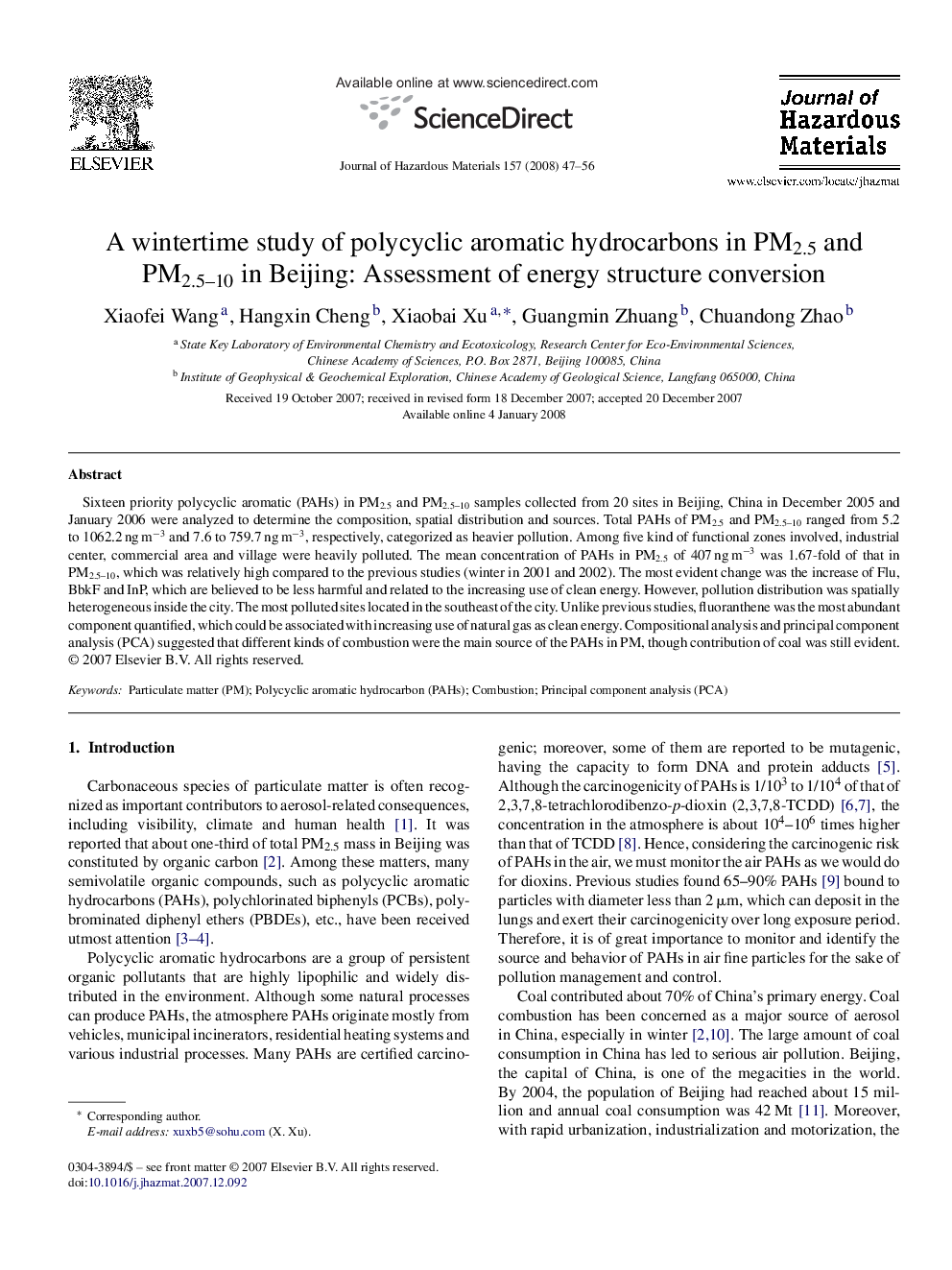| Article ID | Journal | Published Year | Pages | File Type |
|---|---|---|---|---|
| 582931 | Journal of Hazardous Materials | 2008 | 10 Pages |
Abstract
Sixteen priority polycyclic aromatic (PAHs) in PM2.5 and PM2.5-10 samples collected from 20 sites in Beijing, China in December 2005 and January 2006 were analyzed to determine the composition, spatial distribution and sources. Total PAHs of PM2.5 and PM2.5-10 ranged from 5.2 to 1062.2 ng mâ3 and 7.6 to 759.7 ng mâ3, respectively, categorized as heavier pollution. Among five kind of functional zones involved, industrial center, commercial area and village were heavily polluted. The mean concentration of PAHs in PM2.5 of 407 ng mâ3 was 1.67-fold of that in PM2.5-10, which was relatively high compared to the previous studies (winter in 2001 and 2002). The most evident change was the increase of Flu, BbkF and InP, which are believed to be less harmful and related to the increasing use of clean energy. However, pollution distribution was spatially heterogeneous inside the city. The most polluted sites located in the southeast of the city. Unlike previous studies, fluoranthene was the most abundant component quantified, which could be associated with increasing use of natural gas as clean energy. Compositional analysis and principal component analysis (PCA) suggested that different kinds of combustion were the main source of the PAHs in PM, though contribution of coal was still evident.
Related Topics
Physical Sciences and Engineering
Chemical Engineering
Chemical Health and Safety
Authors
Xiaofei Wang, Hangxin Cheng, Xiaobai Xu, Guangmin Zhuang, Chuandong Zhao,
